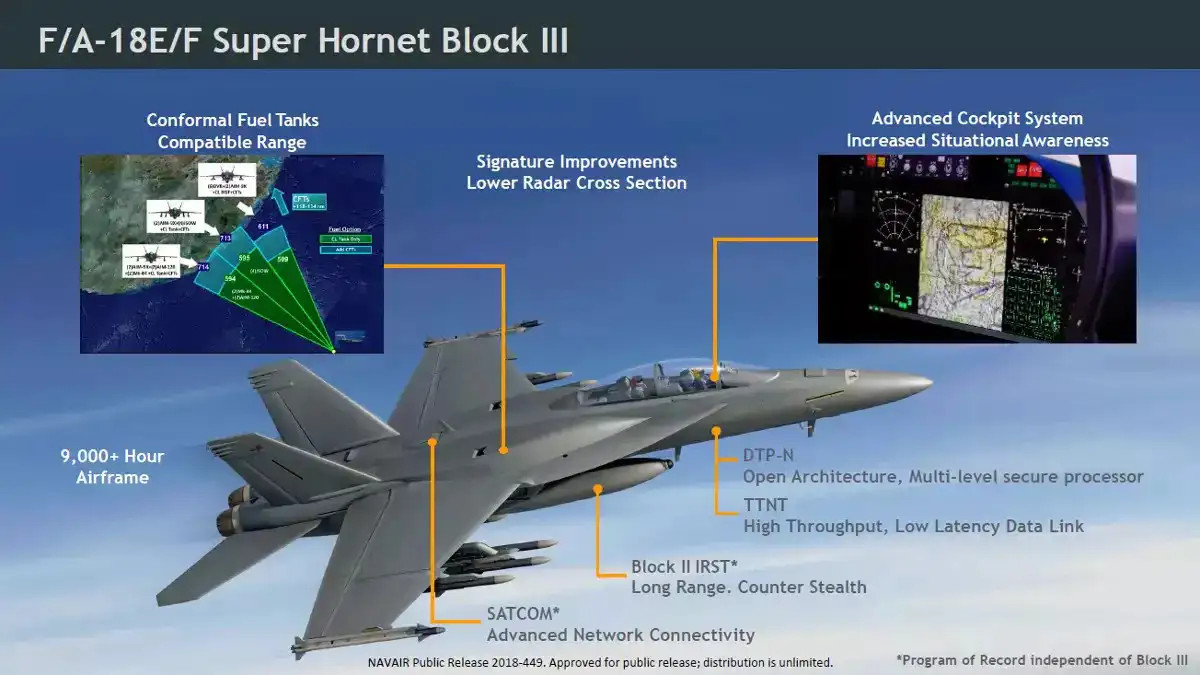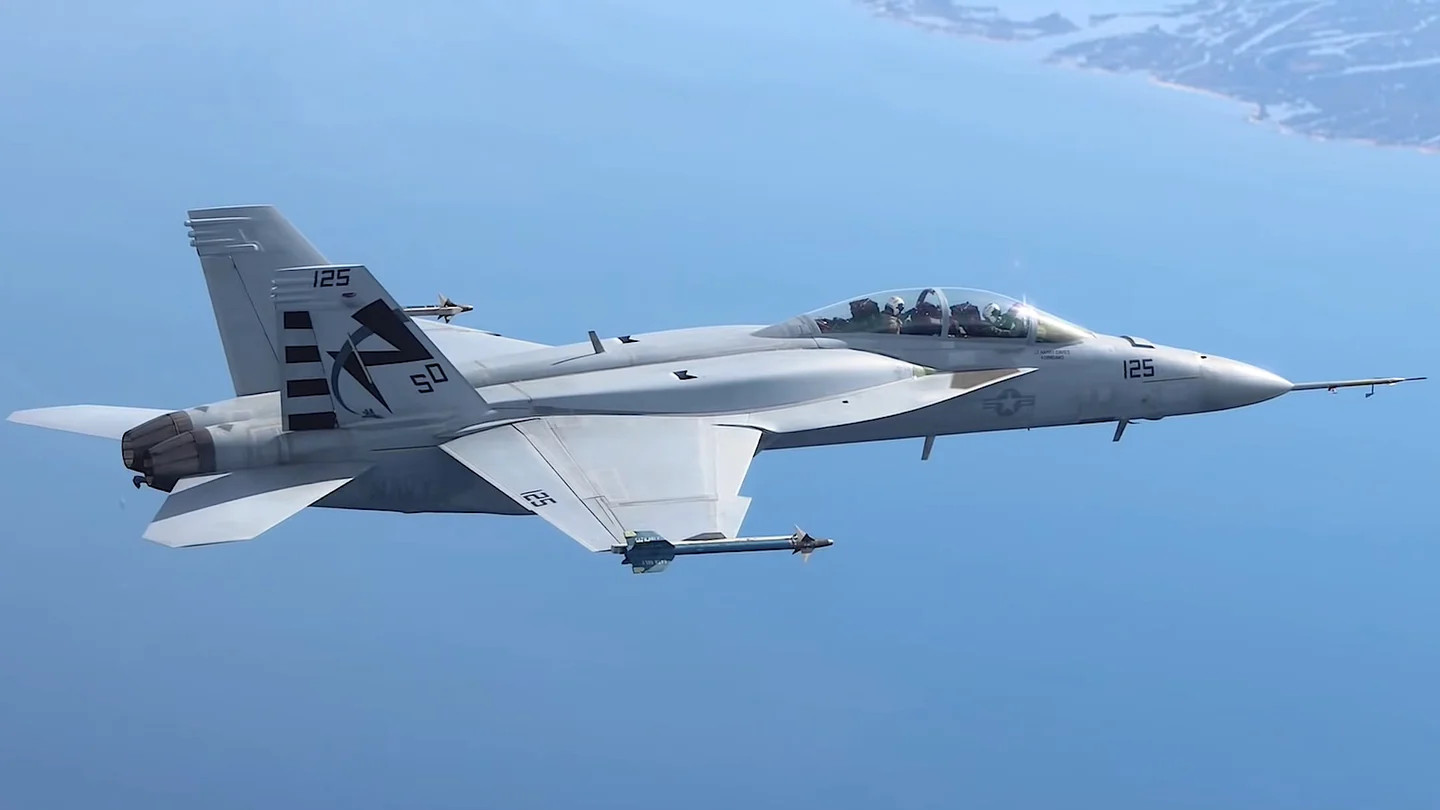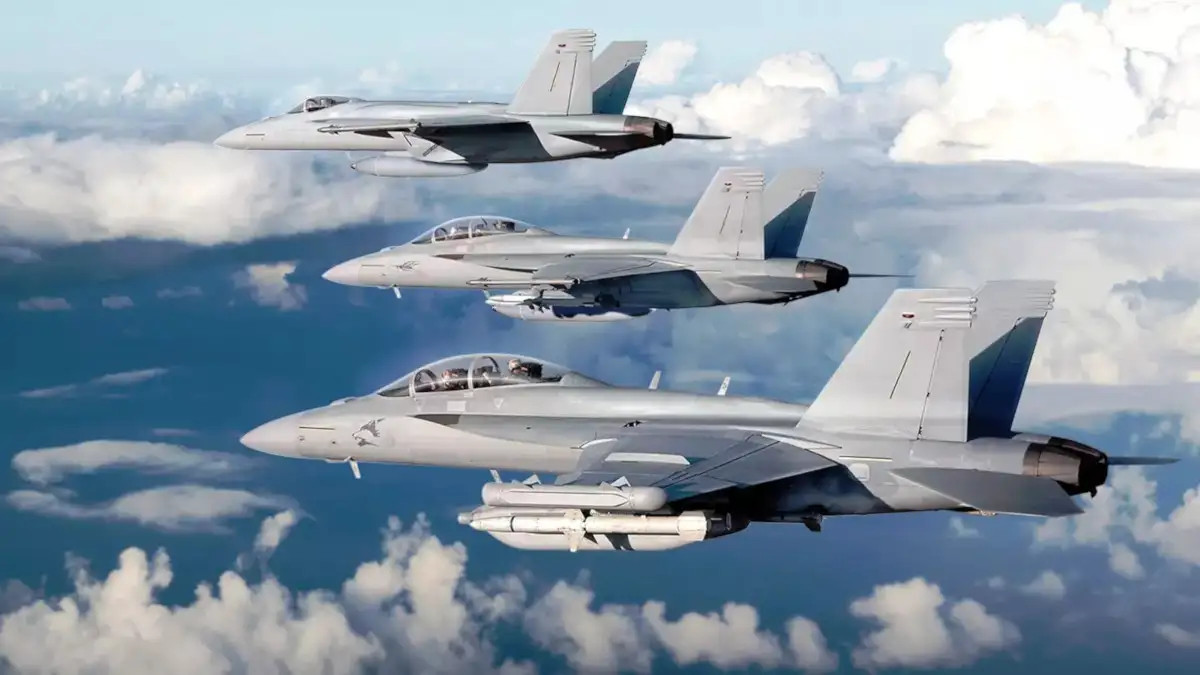Boeing has announced the delivery of the first two operational F/A-18E/F Super Hornet fighter jets in the Block III configuration to the U.S. Navy. That service will now use these aircraft to help complete an ongoing test and evaluation program for these updates, as well as support the development of new tactics, techniques, and procedures to go with them. The Navy expects to begin sending improved Super Hornets to actual frontline units before the end of the year.
The Navy received this pair of Block III F/A-18E/Fs, the first of 78 new-production jets the service currently has on order, earlier this month, according to Boeing. The company had already delivered two test jets with some of the Block III improvements to the Navy last year. The service is set to put a significant portion of its existing 540 Super Hornets through an upgrade program to bring them up to this standard, as well.

“The fleet needs capabilities to keep its edge,” Navy Captain Jason “Stuf” Denney, the service’s program manager for both the F/A-18 and EA-18G Growler aircraft, said in a Boeing press release. “Getting the first operational Block III in our hands is a great step forward in supporting our capability and readiness goals.”
The complete Block III package includes a diverse array of improvements over the Navy’s existing Super Hornets. The jets have new, highly customizable, wide-area, touchscreen multifunction displays, including in the front and rear cockpits on two-seat F/A-18Fs. The aircraft also have the open-architecture Distributed Targeting Processor-Networked (DTP-N), which gives the aircraft’s mission computer more processing power and networking capability, as well as the Tactical Targeting Network Technology (TTNT) data link. Block III Super Hornets have certain features to help reduce the jet’s radar signature, as well. You can read more about the entire package in detail in this past War Zone feature.
Beyond all that, this program has rolled in two other updates that had previously been in the works for future Navy Super Hornets, these being an improved satellite communications (SATCOM) system and the integration of a podded infrared search and track (IRST) system. In addition, Navy Block II Super Hornets that will be upgraded are set to go through a Service Life Modification (SLM) process first, extending their expected lifespan from 6,000 to 10,000 total flight hours.

The original plan had been to include range-extending conformal fuel tanks (CFT) to the Navy’s Super Hornets as part of the Block III package. However, the service uncovered unspecified issues when it sent the test jets to fly from the deck of an actual carrier last year. Boeing subsequently received a stop-work halting continued testing of the CFTs in January and it is unclear when, if ever, they might eventually make their way onto Block III jets. You can read more about what we know of the issues with the CFTs and the impacts that it might have on the Navy’s future plans for its carrier air wings here.

Regardless, the remaining Block III and other associated upgrades for the Navy’s Super Hornets are set to help ensure that those jets can continue to be an important part of the Navy’s carrier air wings going forward. Boeing says that the use of open-architecture systems, such as DTP-N, also opens up pathways for the rapid integration of new and updated functionality for various systems on the jets as time goes on.
“The hardware upgrades are complete. Today we are maximizing the open hardware and software and developing the apps to keep Block III ahead of future threats,” Jen Tebo, Boeing’s Vice President of F/A-18 and EA-18G programs, said in the press release regarding the delivery of the first operational upgraded jets. ”We are giving Navy pilots the tools to make the fastest and most informed decisions possible now and in the future.”
Boeing has already demonstrated how the TTNT link can be used to support future manned-unmanned teaming. Artificial intelligence-driven capabilities to improve pilots’ decision-making abilities are another possibility, Tebo had told reporters during a roundtable last week.
Tebo also noted that Boeing is leveraging work done on the Block III configuration to help with future updates to the EA-18G and to support the development of a future fighter to meet emerging Navy requirements as part of that service’s Next Generation Air Dominance (NGAD) program. “If you think about where the capabilities are going in the future, it’s certainly around the airframe, certainly around the survivability piece, stealth technology piece. But the meat and potatoes in the future are really going to be around the networking and the mission systems, and this sets up the Super Hornet to be the risk-reducer and the bridge to get to Next Gen Air Dominance,” she said at the roundtable.

How the Navy’s NGAD program evolves may have an impact on any future F/A-18E/F plans, and the service already wants to stop buying new Super Hornets, a shift in focus that has drawn skepticism from members of Congress. As it stands now, the Navy has around 540 Super Hornets, in total, but it’s unclear how many of those will ultimately be brought up to the Block III standard.
For its part, Boeing says it expects to be delivering improved jets into the 2030s, with these aircraft coming from one of three lines. One is for new production Super Hornets incorporating the Block III features, while the other two will put existing Navy jets through the SLM and then the Block III upgrade process.
Boeing is also now offering Block III Super Hornets, or at least jets with some of the elements of this package, to foreign customers, such as Canada and India. The Super Hornets that Kuwait recently received, the last of which were delivered this month, had included components — such as the new cockpit displays — that are now going into Block III jets, as well.
Regardless, the Navy sees Super Hornets as a key component of its carrier air wings for years to come, and the units flying these jets are set to start receiving a significant boost in capability in the coming months with the arrival of aircraft in the Block III configuration.
Contact the author: joe@thedrive.com
